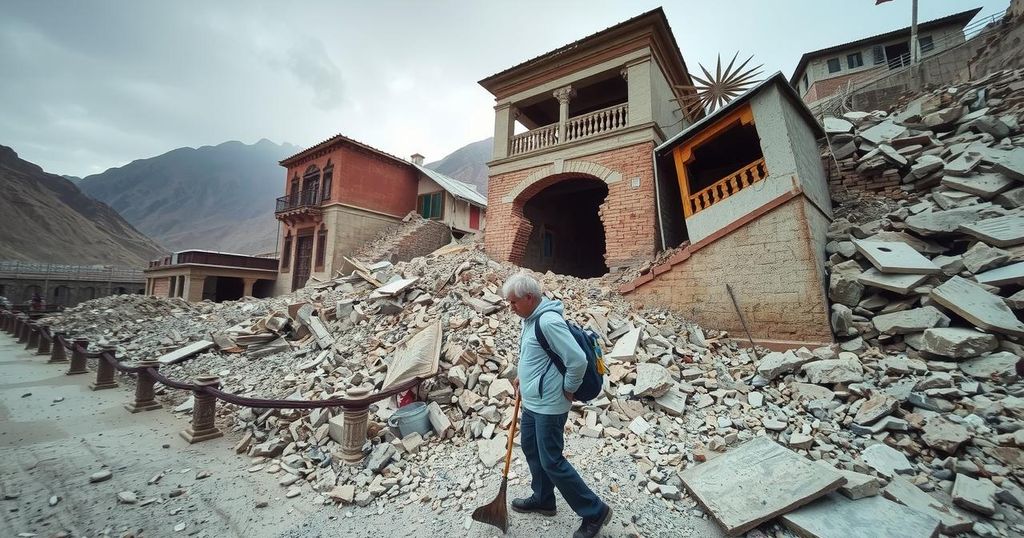A 7.1 magnitude earthquake struck Tibet on January 7th, resulting in 126 fatalities and the destruction of over 3,600 buildings. Rescue efforts are ongoing, complicated by freezing temperatures and numerous aftershocks. The earthquake’s tremors were felt as far as Nepal and India, highlighting the disaster’s widespread impact.
On January 7th, a significant earthquake measuring 7.1 on the Richter scale struck Tibet, resulting in widespread destruction and loss of life. The epicenter was located in Dingri county, approximately 50 miles from the base of Mount Everest and adjacent to the sacred city of Shigatse. Reports indicate that the disaster has claimed the lives of at least 126 individuals, with more than 3,600 buildings obliterated. The tremors were also felt in neighboring Nepal and parts of India. Rescue operations are currently underway, with thousands of rescue personnel mobilized to search for survivors amidst the ruins. Challenges such as freezing temperatures and ongoing aftershocks complicate these efforts, as hundreds of aftershocks have been recorded, some with magnitudes exceeding 4.0.
The earthquake in Tibet on January 7th is a notable natural disaster that highlights the geological instability of the Himalayan region, an area frequently affected by seismic activities due to its tectonic plate movements. This particular quake’s impact was severe, leading to a significant humanitarian crisis as local authorities and rescue teams engage in recovery efforts. The response to this disaster is critical, as it not only affects the immediate region but also has implications for neighboring countries due to the geographical proximity and shared vulnerabilities.
In summary, the recent 7.1 magnitude earthquake in Tibet has led to substantial casualties and infrastructural damage, necessitating extensive rescue and recovery efforts. The harsh weather conditions and potential for further seismic activities pose additional risks for survivors and rescuers alike. This disaster underscores the need for preparedness in regions prone to natural calamities, as communities strive to rebuild and recover from such profound losses.
Original Source: www.economist.com






